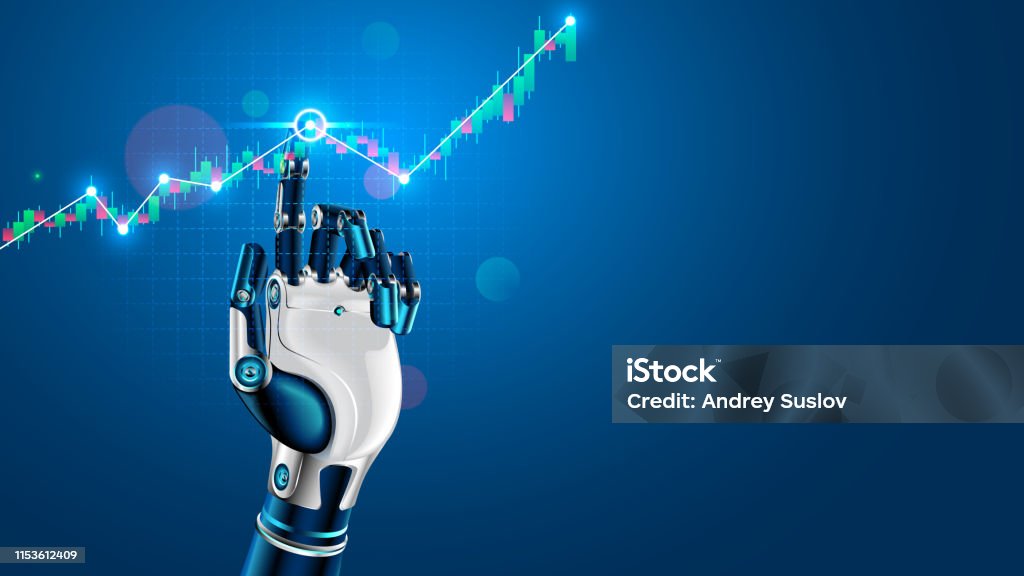The fusion of Artificial Intelligence (AI) and robotics is revolutionizing industries across the board, transforming how we work, live, and interact with technology. From automating complex manufacturing processes to enabling collaborative robots that work alongside humans, AI is breathing new life into the field of robotics, creating machines that are more intelligent, adaptable, and efficient than ever before. This synergy is not just about building smarter robots; it’s about unlocking unprecedented levels of automation, optimization, and innovation.
The Symbiotic Relationship: AI and Robotics
What is AI in Robotics?
AI in robotics refers to the integration of artificial intelligence algorithms, techniques, and capabilities into robotic systems. This allows robots to perform tasks that traditionally require human intelligence, such as:
- Object recognition
- Decision-making
- Problem-solving
- Learning and adaptation
Unlike traditional robots programmed with pre-defined instructions, AI-powered robots can perceive their environment, analyze data, and make autonomous decisions to achieve specific goals. They can learn from experience, adapt to changing conditions, and even improve their performance over time.
Key AI Technologies Driving Robotics
Several AI technologies are crucial for enabling intelligent robots:
- Computer Vision: Enables robots to “see” and interpret images and videos, allowing them to identify objects, navigate environments, and perform visual inspections.
- Natural Language Processing (NLP): Allows robots to understand and respond to human language, facilitating human-robot interaction and enabling voice-controlled commands.
- Machine Learning (ML): Provides robots with the ability to learn from data without explicit programming, enabling them to improve their performance over time and adapt to new situations. Reinforcement learning, a specific type of ML, is particularly useful for training robots to perform complex tasks in dynamic environments.
- Deep Learning: A subfield of machine learning that uses artificial neural networks with multiple layers to analyze complex data patterns and extract features. This is particularly effective for image recognition, speech recognition, and other tasks that require processing large amounts of data.
- Example: A warehouse robot equipped with computer vision and machine learning can identify different types of products, navigate through the warehouse, and pick and place items without human intervention.
Benefits of AI-Powered Robotics
Increased Efficiency and Productivity
One of the most significant benefits of AI in robotics is the potential to increase efficiency and productivity. AI-powered robots can perform repetitive tasks tirelessly, reducing human error and freeing up human workers to focus on more complex and creative tasks.
- Automation of Repetitive Tasks: Robots can automate tasks such as assembly line work, packaging, and material handling, increasing throughput and reducing production costs.
- Improved Accuracy and Precision: AI-powered robots can perform tasks with greater accuracy and precision than humans, reducing errors and improving product quality.
- 24/7 Operation: Robots can operate around the clock, without breaks or fatigue, maximizing productivity and utilization of resources.
Enhanced Safety and Reduced Risk
Robots can perform tasks in hazardous environments or situations that pose a risk to human workers.
- Hazardous Environment Handling: Robots can be deployed in environments that are dangerous for humans, such as those with radiation, extreme temperatures, or toxic chemicals.
- Heavy Lifting and Material Handling: Robots can lift and move heavy objects, reducing the risk of injury to human workers.
- Remote Operation: Robots can be controlled remotely, allowing humans to perform tasks from a safe distance.
- Example: In the construction industry, AI-powered robots can be used to inspect bridges and buildings for structural defects, reducing the need for human inspectors to work at dangerous heights.
Improved Decision-Making and Optimization
AI algorithms can analyze vast amounts of data to identify patterns and insights that humans might miss, leading to better decision-making and optimization.
- Predictive Maintenance: AI algorithms can analyze sensor data from robots to predict when maintenance is needed, preventing breakdowns and minimizing downtime.
- Process Optimization: AI can identify inefficiencies in processes and suggest ways to optimize them, leading to improved performance and reduced costs.
- Demand Forecasting: AI can analyze historical data and market trends to predict future demand, enabling businesses to optimize inventory levels and production schedules.
Applications of AI in Robotics Across Industries
Manufacturing
AI is transforming manufacturing by enabling intelligent automation, improving product quality, and reducing production costs.
- Assembly Line Automation: Robots can perform complex assembly tasks with speed and precision, reducing human error and increasing throughput.
- Quality Control: AI-powered vision systems can inspect products for defects, ensuring that only high-quality products reach customers.
- Predictive Maintenance: AI algorithms can analyze sensor data to predict when maintenance is needed, preventing breakdowns and minimizing downtime.
- Example: BMW uses AI-powered robots with advanced computer vision to inspect the paint quality on their vehicles, ensuring a flawless finish.
Healthcare
AI in robotics is revolutionizing healthcare by enabling more precise surgeries, improving patient care, and automating tasks such as medication dispensing and sample analysis.
- Surgical Robots: Robots can assist surgeons with complex procedures, providing greater precision, dexterity, and control.
- Rehabilitation Robots: Robots can help patients regain mobility and strength after injuries or strokes.
- Medication Dispensing Robots: Robots can automate the process of dispensing medications, reducing the risk of errors and improving efficiency.
Logistics and Supply Chain
AI-powered robots are streamlining logistics and supply chain operations by automating tasks such as warehousing, transportation, and delivery.
- Warehouse Automation: Robots can automate tasks such as picking, packing, and sorting items in warehouses, increasing efficiency and reducing labor costs.
- Autonomous Vehicles: Self-driving trucks and delivery vans are revolutionizing transportation, enabling faster and more efficient delivery of goods.
- Drone Delivery: Drones can be used to deliver packages to remote areas or to customers who need them urgently.
- Example: Amazon uses thousands of robots in its fulfillment centers to automate the process of picking, packing, and shipping orders.
Challenges and Future Trends
Data Requirements
AI algorithms often require large amounts of data to train effectively. Acquiring and managing this data can be a challenge, particularly for new applications.
- Data Collection and Labeling: Gathering sufficient data and labeling it accurately can be time-consuming and expensive.
- Data Privacy and Security: Protecting the privacy and security of data is crucial, especially in sensitive applications such as healthcare.
- Data Bias: Ensuring that the data used to train AI algorithms is representative of the population is essential to avoid biased outcomes.
Ethical Considerations
The increasing use of AI in robotics raises important ethical considerations, such as job displacement, algorithmic bias, and the potential for misuse.
- Job Displacement: As robots automate more tasks, there is a risk of job displacement for human workers. It’s crucial to focus on retraining and upskilling workers to prepare them for new roles in the age of AI.
- Algorithmic Bias: AI algorithms can perpetuate and amplify existing biases in the data they are trained on, leading to unfair or discriminatory outcomes.
- Autonomous Weapons: The development of autonomous weapons raises serious ethical concerns about the potential for unintended consequences and the erosion of human control.
Future Trends
- Collaborative Robots (Cobots): Cobots are designed to work safely alongside humans in shared workspaces, enabling greater flexibility and efficiency.
- Edge Computing: Moving AI processing to the edge of the network, closer to the robots, can reduce latency and improve real-time performance.
- Robotics-as-a-Service (RaaS): RaaS models allow businesses to access robotic solutions without the upfront investment of purchasing and maintaining robots. This can make AI-powered robotics more accessible to small and medium-sized enterprises.
- Advanced Sensor Technology: Development in sensor technology will provide robots with more accurate and detailed information about their environment, enhancing their capabilities and autonomy.
Conclusion
The integration of AI into robotics is poised to transform industries and reshape the future of work. By enabling robots to perform complex tasks, adapt to changing environments, and make intelligent decisions, AI is unlocking unprecedented levels of automation, efficiency, and innovation. While challenges such as data requirements and ethical considerations need to be addressed, the potential benefits of AI-powered robotics are enormous. From manufacturing and healthcare to logistics and transportation, AI in robotics is driving a new era of intelligent automation, promising a future where humans and machines work together to create a more productive, safe, and sustainable world. The key takeaway is that understanding and embracing this technological convergence is essential for businesses and individuals alike to thrive in the evolving landscape.




